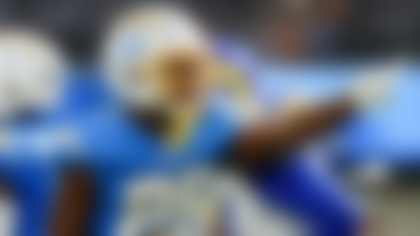Everyone was talking about the Saints.
Despite a 6-5 record that positioned New Orleans at the bottom of the NFC South, the Saints had won two games in a row for the first time all season and re-entered the playoff discussion after throttling the Packers the week before.
Anatomy of a Play
More Anatomy of a Play:
»
**Perfect storm leads to 99-yard TD**
New Orleans traveled to Tampa Bay for a Week 13 divisional matchup against possibly the most overlooked 8-3 team in the NFL. For the Buccaneers to win, stopping the league's top-rated passing offense would be crucial.
Drew Brees, on pace to break Dan Marino's single-season passing record, had already torched the Buccaneers defense once this year, but last Sunday Tampa Bay stopped Brees when it counted most.
In our Anatomy of a Play segment this week, we break down two of the interceptions Brees threw in the second half against the Buccaneers.
Trailing by 10 points late in the third quarter, the Saints moved the ball down the field and were poised to cut into Tampa Bay's lead. When Brees surveyed the field prior to the snap, the Bucs were aligned as if they were in a man-to-man scheme. But once the ball was snapped, the defense wasn't what it seemed.
Bucs cornerback Ronde Barber, who had aligned in press-man position pre-snap, retreated into a three-deep zone coverage. The key was his zone turn. Brees anticipated Barber would turn out toward the sideline to cover his man, but instead Barber turned in, toward Brees and the intended receiver, Jeremy Shockey.
Barber read Brees and Shockey and saw the seam pass coming. He positioned himself perfectly and made a terrific play on a pass that Brees thought would be a touchdown. Linebacker Cato June intercepted the ball after it was tipped by Barber and made the big play for the Bucs defense.
The Saints were able to overcome that interception, tie the game at 20, and gain possession with less than three minutes remaining in the fourth quarter.
The ball was exactly where New Orleans wanted it, in the hands of Drew Brees.
But Brees was fooled again. This time by safety Jermaine Phillips, who initially acted like he was going to drop into deep coverage, but instead played underneath, in a robber coverage.
Brees didn't think Phillips would be a factor and hesitated slightly before releasing his pass over the middle to Marques Colston. That allowed Phillips more than enough time to jump the route and intercept the ball. It was one of the Cardinal Sins for a quarterback -- throwing late over the middle -- something Brees rarely does, and it determined the outcome of the game. Matt Bryant's game-winning field goal ensued.
These two interceptions were arguably the two most important plays of the game. And while Barber and Phillips both made great plays on the ball, it was the defensive scheme that caused confusion, camouflaged their coverage and put them in position to make the plays.
The Bucs have flown under the radar all season, almost as if they were wearing a disguise, and that's exactly how their defense defeated the Saints.



